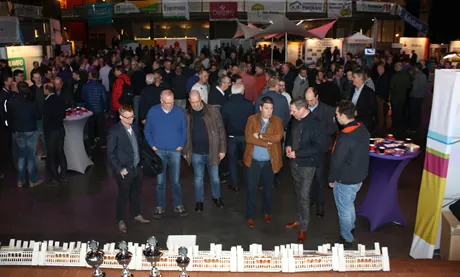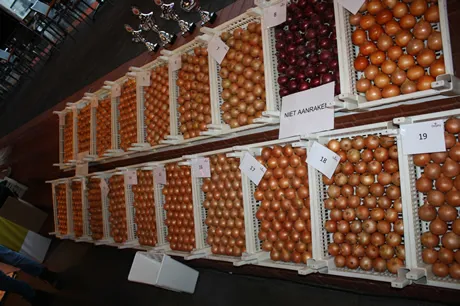During the Onion theme day put on by the Agricultural fair for Northern and Central Netherlands in Dronten, Netherlands Piet van Liere spoke to a large number of onion growers about Africa and South America. Last year 445,000 tons of onions went to Africa and 115,000 tons of onions went to South America. Last year Brazil saved the Dutch onion season, but Piet does not have such good news now, "Eighty percent of all Dutch onions are unsuitable for the Brazilian quality market this year, either because of the color or flaws on the inside."
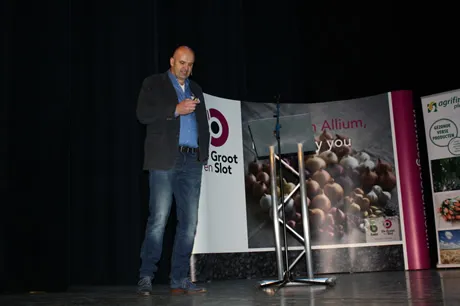
Together with his brother Jacco, Piet owns both the Van Liere farm (864 acres), the Van Liere sorting company that sorted and packaged 6,225 onions per week last week in the peak period, and the export company Flevo Trade, which exports to more than 70 countries. Onions are their largest product (78%), supplemented by export potatoes (16%), carrots (5%) and red beets, cabbage, celery and parsnips (1%), which mainly serve as service products for the Eastern European market.
Unique features
In front of a room full of onion growers Van Liere pointed out the unique characteristics of Dutch onions, "For us it is completely normal to have onions available year round, but in most parts of the world that is not the case. In India, for example, onions last three months. In the Netherlands we have unique growing areas, the best seed companies in the world and the lowest exporting costs."
The exporter showed many photos in which the difference could be seen between the professional manner in which the Netherlands loads the onions into the containers or ships, and the manner in which the onions are received and sold in the most important destination country, Senegal, "It is swarming with people, and before the onions arrive at their last stop they have changed hands twenty times. This is why the quality of the skin on the Dutch onion is so important."
Piet does not expect much from Senegal's goal to become self-sufficient in onions this year, "The quality and production is nowhere near the Dutch product. Also, diseases and plagues, the climate and political unrest all endanger local production; which also applies to our onions, for example, if a captain does not want to sail to Africa because of Ebola or some other reason. So far, Dutch onion exports to nearly all African countries is rising annually. Also, the African population is expected to double by 2050. There are plenty of opportunities for Dutch export if the local production does not grow. They consume a lot of onions and they appreciate the quality of the Dutch onions."
Brazil
Piet says that it is not entirely true that Brazil has substituted Russia in importing onions from the Netherlands, "We have been exporting to Brazil for a few years now, export in the 2014/15 season was very high." He said that Spain and Argentina are their biggest competitors on the Brazilian market, "Money is guaranteed in Brazil, that is different in Africa," continued the exporter. But not everything is clear. For example, the onion acreage figures that the Brazilian Ministry report (138,000 acres) is controversial. According to the same ministry, Brazil grows 1.5 million tons of onions and the production is growing annually."
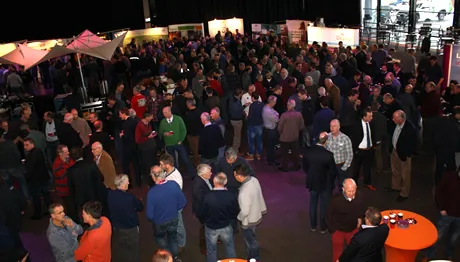
The exchange rate for the Brazilian Real is not advantageous this year for exporting to Brazil. Last January a bag of onions cost 6.80 Euro, this year the same bag costs 9.10 Euro. The quality of the local product is less of an issues because the sorting, packaging and sales all happens quite quickly, while the Dutch onions take weeks to get there. The changing weather, especially in the Brazilian growing areas, and the increase in consumption, mean that export opportunities for Dutch onions remains high.
The prettiest stored onion
Traditionally the most beautiful stored onion is chosen on the Onion Theme day. The winner was André Harpe from Swifterbant with a Novista onion from Takkii. The second prize and the audience prize went to his neighbor Harry Schreuder, who had a Dormo onion from Hazera. The third prize went to Peter Burgler with Summit from Bejo/De Groot & Slot. What was unique was that there were participants from every onion producing state, and that the organic onions had a good chance in the running.
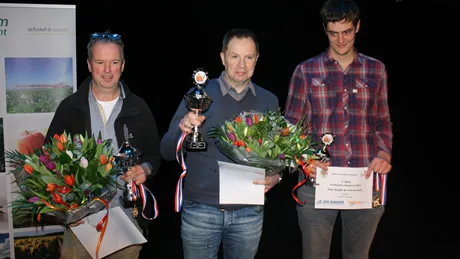 André Harpe, Harry Schreuder and Peter Burgler
André Harpe, Harry Schreuder and Peter Burgler
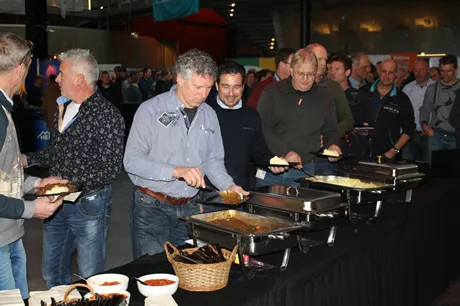 The day ended with a hearty meal.
The day ended with a hearty meal.
